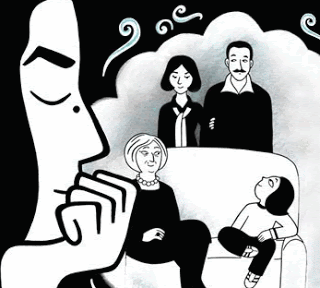Week 14: The Future of Comics
This week I read Trash Mountain by Kelton Sears. Unlike most comics I have read, this is a GIF comic so it was animated and even had music playing in the background. This made reading the comic a very interesting and unique experience. Sears approach to this comic is strange but very effective in order to distinguish his style and story. This format was engaging and was felt more inclusive and audience based. Although there was no dialogue, Sears added sound effects throughout the comic that moved with each animation. Sears uses abstract visuals with the combination of photos with shapes and lines, like a collage, to tell the story. It is interesting how the visuals change and become more abstract to show the protagonist's journey. This comic really explores other possibilities of what comics could be and really pushes the boundaries. As technology is taking over, more and more comics should explore a digital format and possibly become a GIF. It will be more engaging and inte

